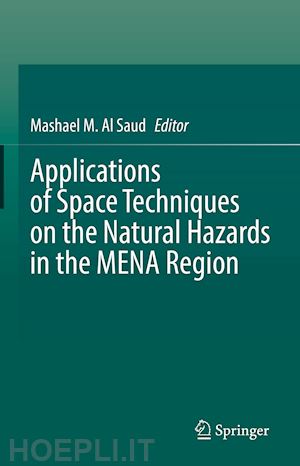
Questo prodotto usufruisce delle SPEDIZIONI GRATIS
selezionando l'opzione Corriere Veloce in fase di ordine.
Pagabile anche con Carta della cultura giovani e del merito, 18App Bonus Cultura e Carta del Docente
This book introduces a comprehensive understanding in the use of space techniques in natural hazards and risk management in the MENA Region. The book is based on different case-studies from 25 MENA countries, and will be useful in highlighting the issues from all aspects.
In recent years the number of natural hazard events has increased in the MENA Region. This is exacerbated by the changing climate and extreme climate events, as well as a large increase in the population in this area. Disastrous events occur on a yearly basis characterized by a vulnerability of physical processes. Floods, earthquakes, and mass movement result in severe damage to property and livelihoods, and have devastating effects upon the environment. These events cause severe financial losses, which on an annual basis, can exceed millions of dollars.
The predication, assessment and monitoring approaches remain inadequate in managing these hazards and in mitigating their impacts, but with the development of space techniques and geo-information systems, these situations can now be better managed. The miscellany of satellite images, with different spatial and temporal resolutions, enable the detection of terrain features and provide indications of potential natural risks.
This book will of interest to stakeholders, including field experts, academics, researchers and decision makers.











Il sito utilizza cookie ed altri strumenti di tracciamento che raccolgono informazioni dal dispositivo dell’utente. Oltre ai cookie tecnici ed analitici aggregati, strettamente necessari per il funzionamento di questo sito web, previo consenso dell’utente possono essere installati cookie di profilazione e marketing e cookie dei social media. Cliccando su “Accetto tutti i cookie” saranno attivate tutte le categorie di cookie. Per accettare solo deterninate categorie di cookie, cliccare invece su “Impostazioni cookie”. Chiudendo il banner o continuando a navigare saranno installati solo cookie tecnici. Per maggiori dettagli, consultare la Cookie Policy.